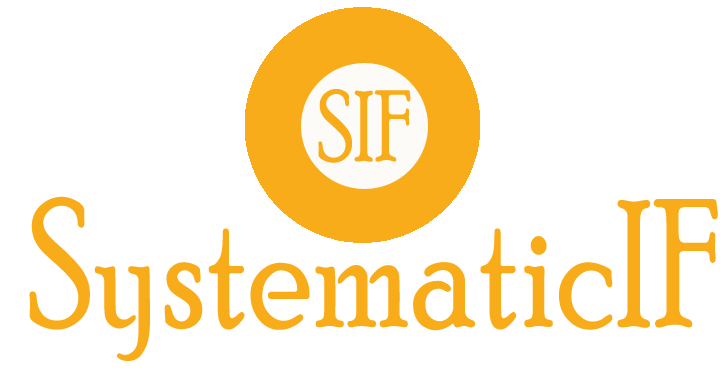Strategies of Student Youth’s Self-Representations in Choosing Behavioral Tendencies
Abstract
The aim is theoretical-empirical research of the dominant strategies of student youth’s self-presentations in the context of social desirability and actual behavioral tendencies. Methods. The sample involved students from three levels of higher education institutions of Ukraine representing socionomic and technonomic profiles and numbered n = 142 participants. The respondents’ age ranged from 18 to 28 years (M = 23.36; Me = 23.50; SD = ± 6.12). Theoretical and empirical research methods were used. Theoretical methods included analysis, synthesis and generalization. Empirical methods comprised a complex of valid and reliable methods which ensured determination of the parameters of self-representation, social desirability and behavioral tendencies. Standard methods of mathematical statistics were applied to establish statistically significant correlations and differences. Results and discussion. We registered eleven statistically significant correlations of self-representation strategies with the researched parameters, all of them being direct at the level р≤.050; р≤.010 and р≤.001. It was found that the assertive self-presentation strategy “Wanting to be liked” (AWL) (n = 102; 71.83%; М = 4.03; SD = ±.67) is dominant in student youth. We revealed the dual nature of student youth’s self-representation strategies and found that the dominant approval motivation manifests itself in constructive and destructive forms. It was established and explained that high social desirability with the behavioral tendency for dependence has a negative impact on intellectual and physical activities of adolescents. We warn that such a combination can be transformed into respondents’ psychological dependence on permanent self-approval, updating profiles in social networks and the desire to meet social expectations. Conclusions. We highlighted the danger which can be posed by high levels of the formedness of social desirability by the scales “self-deceit” and “managing impressions” for the formation of a young individual, if no prevention measures are taken to develop assertive self-presentation strategies. The findings of the applied research should be implemented in educational process, used in psychological theory and practice. The obtained scientific facts possess novelty and value for everyone working with student youth.
Downloads
References
Bij de Vaate N. A. J. D., Veldhuis J., Konijn E. A. The impact of seeing and posting photos on mental health and body satisfaction: A panel study among Dutch and Japanese adolescents. Computers in Human Behavior. 2023. Vol. 148. P. 107906. https://doi. org/10.1016/j.chb.2023.107906
Blynova O., Derevianko S., Ivanova O., Popovych I., Estay Sepulveda J. G. Professional relevance of potential labor emigrants. Revista Notas Históricas y Geográ- ficas. 2022a. Vol. 29. P. 88–106. https://www.revistanotashistoricasygeograficas. cl/index.php/nhyg/ article/view/435
Blynova O., Lappo V., Kalenchuk V., Agarkov O., Shramko I., Lymarenko L., Popovych I. Corporate Culture of a Higher Education Institution as a Factor in Forming Students’ Professional Identity. Revista Inclusiones. 2020. Vol. 7(SI). P. 481–496. https:// www.revistainclusiones.org/index.php/inclu/ article/view/1305 Blynova O., Popovych I., Hulias I., Radul S., Borozentseva T., Strilets-Babenko O., Minenko O. Psychological safety of the educational space in the structure of motivational orientation of female athletes: a comparative analysis. Journal of Physical Education and Sport. 2022b. Vol. 22(11). P. 2723–2732. https://doi.org/10.7752/jpes.2022.11346
Chen S., van Tilburg W. A. P., Leman P. J. Women’s Self-Objectification and Strategic Self-Presentation on Social Media. Psychology of Women Quarterly. 2023. Vol. 47(2). P. 266–282. https://doi. org/10.1177/03616843221143751
Chen S., van Tilburg W. A. P., Leman P. J. Self-objectification in women predicts approval motivation in online self-presentation. British Journal of Social Psychology. 2022. Vol. 61(1). P. 366–388. https:// doi.org/10.1111/bjso.12485
Crowne D. P., Marlowe D. A new scale of social desirability independent of psychopathology. Journal of Consulting Psychology. 1960. Vol. 24(4). P. 349– 354. https://doi.org/10.1037/h0047358
Demir S., Özkan T., Demir B. Social comparison orientation mediates the association between HEXACO and self-presentation. Scandinavian Journal Psychology. 2022. Vol. 63. P. 405–414. https://doi. org/10.1111/sjop.12819
Edwards, A. L. (1963). A factor analysis of experimental social desirability and response set scales. Journal of Applied Psychology, 47(5), 308–316. https:// doi.org/10.1037/h0039793
Goffman E. The presentation of self in everyday life. Doubleday. 1959. URL: https://psycnet.apa.org/ record/1959-15044-000
Halian I., Popovych I., Hulias I., Serbin Iy., Vyshnevska O., Kovalchuk Z., Pyslar A. Correlation between personality traits of young athletes and their level of self-efficacy. Journal of Physical Education and Sport. 2023a. Vol. 23(5). P. 1119–1129. https://doi.org/10.7752/jpes.2023.05140
Halian I., Popovych I., Vovk V., Kariyev A., Poleshchuk L., Halian O. Correlation of the coach’s qualities and junior athletes’ self-efficacy. Journal of Physical Education and Sport. 2023b. Vol. 23(7). P 1621– 1630. https://doi.org/10.7752/jpes.2023.07199
Helmes E. The Role of Social Desirability in the Assessment of Personality Constructs. In: Goffin, R.D., Helmes, E. (eds) Problems and Solutions in Human Assessment. Springer, Boston, MA. 2000. https:// doi.org/10.1007/978-1-4615-4397-8_2
Ketler-Mytnytska T. Shevchenko N. The Relationship between Internality and Self-development of Psychology Students: the Effect of Optimistic Attributional Style. Social Welfare: Interdisciplinary Approach. 2022. Vol. 12. P. 56–70. https://doi. org/10.15388/SW.2022.12.14
Kleinman K., Johnston M. H. (H.), Dekel N., Corn A. The real, the virtual, and the pandemic. Psychoanalytic Psychology. 2023. Vol. 40(3). P. 199–206. https:// doi.org/10.1037/pap0000450
Lee S., Quigley D. V., Nesler M. S., Corbett A. B., Tedeschi J. T. Development of a self-presentation tactics scale. Personality and Individual Differences. 1999. Vol. 26(4). P. 701–722. https://doi.org/10.1016/ S0191-8869(98)00178-0
Lopez F. G., Rice K. G., Durán B. S., Hong J. Profiling Authentic Self-Development: Associations with Basic Need Satisfaction in Emerging Adulthood. Emerging Adulthood. 2023. Vol. 11(2). P. 303–316. https://doi.org/10.1177/21676968221111974
Markowitz D. M. Self-presentation in medicine: How language patterns reflect physician impression management goals and affect perceptions. Computers in Human Behavior. 2023. Vol. 143. P. 107684. https://doi.org/10.1016/j.chb.2023.107684
Messick S. Book Reviews : The Social Desirability Variable in Personality Assessment and Research, by Allen L. Edwards. New York: The Dryden Press. 1957. P. 108. Educational and Psychological Measurement. 1957. Vol. 19(3). P. 451–454. https://doi. org/10.1177/001316445901900321
Nitschinsk L., Tobin S. J., Vanman E. J. The dark triad and online self-presentation styles and beliefs. Personality and Individual Differences. 2022. Vol. 194. 111641. https://doi.org/10.1016/j. paid.2022.111641
Paulhus D. L., John O. P. Egoistic and Moralistic Biases in Self-Perception: The Interplay of Self-Deceptive Styles With Basic Traits and Motives. Journal of Personality. 1998. Vol. 66. P. 1025–1060. https://doi. org/10.1111/1467-6494.00041
Paulhus D. L. Socially Desirable Responding: The Evolution of a Construct. In: Braun H. I., Jackson D. N., Wiley D. E. (Eds.) The role of constructs in psychological and educational measurement (pp. 49–69). Mahwah (NJ): Erlbaum, 2002. URL: https://www. sciepub.com/reference/148457
Popovych I., Halian I., Lialiuk G., Chopyk R., Karpenko Ye., Melnyk Yu. Research of young female handball players’ self-actualizing mental states. Journal of Physical Education and Sport. 2022. Vol. 22(7). P. 1599– 1607. https://doi.org/10.7752/jpes.2022.07201
Popovych I., Kononenko O., Kononenko A., Stynska V., Kravets N., Piletska L., Blynova O. Research of the Relationship between Existential Anxiety and the Sense of Personality’s Existence. Revista Inclusiones. 2020. Vol. 7(SI). P. 41–59. https:// www.revistainclusiones.org/index.php/inclu/ article/view/300
Popovych I., Shevchenko A., Galvez L. M., Klenina K. Research of the relationship between social desirability and value orientations of adolescents. Revista Notas Históricas y Geográficas. 2021. Vol. 26. P. 241– 268. https://www.revistanotashistoricasygeograficas. cl/index.php/nhyg/article/view/339
Pryor C., Perfors A. Howe P. D. L. Even arbitrary norms influence moral decision-making. Nature Human Behavior. 2019. Vol. 3. P. 57–62. https://doi. org/10.1038/s41562-018-0489-y
Radul V., Stryzhakov A., Hornar I., Radul O., Tkachenko O. Research of future masters of pedagogy’s socio-professional activity. Amazonia Investiga. 2022. Vol. 11(56). P. 18–27. https://doi. org/10.34069/AI/2022.56.08.2
Simunović V., Žeželj I. Managing Self-Presentation: How Social Cues Shape Different Forms of Socially Desirable Responding. In Studia Psychologica. 2023. Vol. 65(2). P. 103–119. P. 0039–3320. https://doi.org/10.31577/sp.2023.02.869
Stephenson W. General Theory of Communication. Operant Subjectivity. 2014. Vol. 37. P. 38–56. https://doi.org/10.15133/J.Os.2014.011
Tett R. P., Simonet D. V. Applicant Faking on Personality Tests: Good or Bad and Why Should We Care? Personnel Assessment and Decisions. 2021. Vol. 7(1), Article 2. https://doi.org/10.25035/pad.2021.01.002
Tsartsapakis I., Zafeiroudi A., Vanna G., Gerou M. Relationships of Body Dissatisfaction and Self-Esteem with Social Physique Anxiety among University Students in Different Study Programs. Trends in Psychology. 2023. https://doi.org/10.1007/ s43076-023-00329-0
Шевченко А. В. Дослідження взаємозв’язку соціальної бажаності та ціннісних орієнтацій в юнацькому віці. Інсайт: психологічні виміри суспільства. 2019. № 1. С. 90–95. https://doi. org/10.32999/2663-970X/2019-1-14
Stern S. Regretted Online Self-Presentations: U.S. College Students’ Recollections and Reflections. Journal of Children and Media. 2015. Vol. 9(2). P. 248–265. https://doi.org/10.1080/17482798.2015.1024000
Schlenker B. R., Leary M. R. Social anxiety and self-presentation: A conceptualization model. Psychological Bulletin. 1982. Vol. 92(3). P. 641–669. https://doi. org/10.1037/0033-2909.92.3.641
Uski S., Lampinen A. Social norms and self-presentation on social network sites: Profile work in action. New Media & Society. 2016. Vol. 18(3). P. 447– 464. https:// doi.org/10.1177/1461444814543164
Xie X., Wang X., Zhao F., Lei L., Niu G., Wang P. Online Real- Self Presentation and Depression among Chinese Teens: Mediating Role of Social Support and Moderating Role of Dispositional Optimism. Child Indicators Research. 2018. Vol. 11. P. 1531–1544. https:// doi.org/10.1007/s12187-017-9484-5
Yang K., Kwon S., Jang D. Adolescent Athletes’ Self-Presentations on Social Media and Their Self-Esteem as Moderated by Their Perceptions of Responsiveness by Others. Perceptual and Motor Skills. 2024. Vol. 131(1). P. 17–38. https://doi. org/10.1177/00315125231216020
You C., Liu Y. The effect of mindfulness on online self-presentation, pressure, and addiction on social media. Frontiers in Psychology. 2022. Vol. 13. P. 1034495. https://doi.org/10.3389/ fpsyg.2022.1034495
Authors who publish with scientific journal agree to the following terms:
• All scientific papers may be freely copied and distributed on any medium and in any format, provided that the references to the initial data of the scientific work are indicated.
• Authors retain copyright and grant the journal right of first publication with the work simultaneously licensed Creative Commons Attribution License .
• Authors are able to enter into separate, additional contractual arrangements for the non- exclusive distribution of the journal’s published version of the work (institutional repository, your website, monograph), with an acknowledgement of its initial publication in this journal.





































